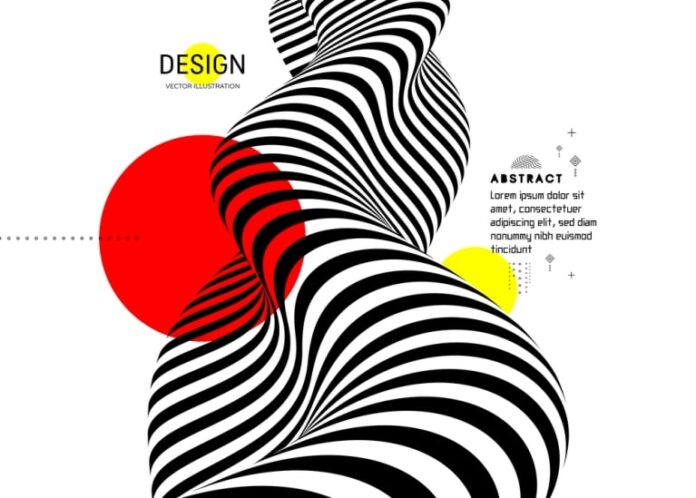Graphic design is all around us. Product packaging, billboards, websites, and social media posts are created with the help of graphic designers. What’s even more interesting is that this discipline has existed since ancient times, even long before it was named “graphic design.”
To learn more about this discipline, read further. This article explains the evolution from ancient times to graphic design in 2024.
Graphic Design Evolution
It’s hard to imagine a world without graphic design these days. The market size of this industry, measured by revenue, reached $49.7 billion in 2023. Furthermore, nowadays, 19% of businesses spend more than $10,000 per year on graphic design.
But even before these numbers were taken into account, people were creating graphic designs and using them in their daily lives. Here’s what the graphic design timeline looks like.
Cave Paintings
Prehistoric cave paintings dated around 38,000 BCE are considered the origins of graphic design. Just like these days, graphic design is used to create and convey various messages; such paintings were the first known form of visual communication. They are found worldwide and mostly depict hunting scenes and scenes from daily life.
Written Language
The first written language wasn’t made of letters. It was created by the Sumerians around 3300 to 3000 BCE and was mostly made of symbols and icons representing certain objects. This concept is still largely used today, especially in graphic and web design.
Paper and Printing
Around the 6th century CE, the Chinese made their first printing discoveries. They used wooden blocks covered with ink to stamp symbols on a surface. Around 105 CE, the Chinese also invented paper. While it wasn’t like the one we are used to today, it was still a huge turning point for humanity and graphic design.
Renaissance and Industrial Revolution
This period marked the appearance of the most influential graphic design developments, such as the invention of the printing press. It was created in 1439 by Johannes Gutenberg and made literature (and literacy) more accessible to people. Printed books cost less to create—therefore, they were much cheaper and affordable.
In the late 1400s, people started creating the first logos. The 1600s are marked by the appearance of the first paid advertisements printed along the news in the newspapers.
20th-century Graphic Design
Graphic design bloomed in the 20th century, reminding us more and more of the discipline we see today. During war, people started using graphic posters to encourage nations, convey certain messages, or promote specific views.
Various art movements that were happening at this time, both in the US and worldwide, also massively influenced graphic design. Such movements are Bauhaus, Art Deco, pop art, and postmodernism.
The Digital Age of Graphic Design
Graphic design as we know it started shaping in 1990, the year the first version of Adobe Photoshop was released. This tool is still the most commonly used one by graphic designers and photo editors.
But the real breakthrough happened in the 2000s when people started creating designs for smartphones and tablets. Because of that, designs became responsive, more interactive, and accessible. New branches of design also emerged: web design, UI/UX design, and mobile app design.
Nowadays, various AI, AR, and VR technologies appear. These technologies also affect the graphic design discipline and change how today’s designers work.
FAQ: When was graphic design invented?
Although the origins of graphic design go back to the prehistoric era, it took centuries for it to become a formal discipline. The term “graphic design” was established in the 1920s by American book designer William Addison Dwiggins, marking the proper recognition of the term.
FAQ: How is graphic design changing?
Graphic design changes with the appearance of new tools used for visual creation. There is a common belief that future designers will be more like architects than executives, envisioning concepts and using AI tools to turn them into finished projects.
Historical Design Trends
Graphic design evolution is truly impressive. What’s even more impressive is that certain aspects continue to influence this discipline even centuries later. Some of the most notable historical design trends are the following.
Art Nouveau (late 19th–early 20th century)
Art Nouveau is known for its designs inspired by natural forms. Such designs are filled with ornamental details and asymmetry, and convey a sense of organic elegance.
Art Deco (1920s–1930s)
Art Deco uses geometric shapes, bold colors, and modern aesthetics. It influenced various design disciplines, from architecture to fashion, and is commonly associated with luxury and glamor.
Bauhaus (1919–1933)
The Bauhaus movement praises the “less is more” principle. It focused on simplicity, functionality, and the use of modern materials. A lot of modernist designs are influenced by Bauhaus.
Swiss Style (1940s–1950s)
The Swiss style is about clarity, readability, and objectivity in design. It uses grid systems, sans-serif typography, and a minimalist approach, influencing graphic design worldwide. This style is often seen in typography posters.
Postmodernism (1980s–1990s)
Postmodern design rejected the strict rules of modernism and focused on eclectic styles and historical references instead. It blurs the lines between high and low art.
Digital Revolution (1990s–present)
The digital era greatly influenced graphic design, shifting it from print to screens. Although print designs are still relevant, today’s graphic designers must work with digital visuals just as efficiently as with print ones. Factors like accessibility, sustainability, responsive design, and AI-inspired design quickly became important during this era.
FAQ: How has graphic design evolved over time?
Initially, graphic design was created using physical materials, such as pens, ink, watercolor, and other art supplies. Nowadays, many such visuals are created using digital tools, such as Adobe Photoshop, VistaCreate, Sketch, and others.
To Sum Up
Graphic design has existed for ages and continues to develop today. Although modern graphic designs differ a lot from those created centuries ago, several historical design trends continue to influence the discipline to this day.
